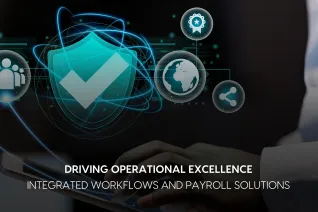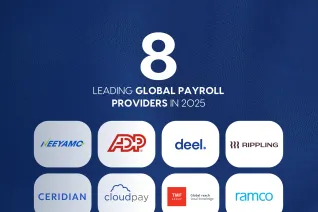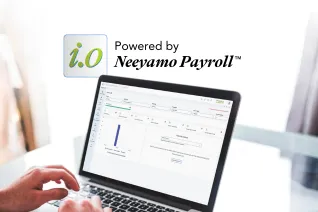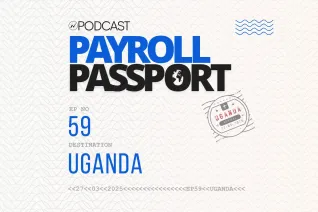Leveraging Payroll Data for Workforce Planning

Organizations spend approximately 70% of their operating costs on their workforce.
With market dynamics shifting constantly and employee preferences evolving rapidly, strategic workforce planning has become paramount for sustainable success. At the nucleus of this strategic endeavor lies a hidden gem: payroll data — a rich repository of employee information beyond mere compensation records. Payroll data offers a comprehensive view of the workforce, encompassing demographic details, compensation trends, and turnover rates. Leveraging this data enables organizations to make informed decisions about staffing levels, talent acquisition, and employee development initiatives. It also empowers HR professionals and business leaders in their strategic decision-making processes.
The Role of Payroll Data in Workforce Planning
Payroll data transcends mere numbers; it serves as the pulse of contemporary workforce methodologies. It is the central engine that unveils every facet of your workforce - from their identities to their compensation structures and retention tendencies.
Delving into payroll data paints a vivid tableau of your employee landscape:
- demographics unveil the composition of your workforce,
- compensation trends illuminate your position in the market and
- turnover rates offer insights into employee contentment.
So, what sets payroll data apart as a transformative force? Unlike subjective surveys, it is immediate and impartial. Moreover, its comprehensive nature allows for in-depth exploration, revealing patterns, and informing strategies to invigorate your workforce and propel your organization toward success. In essence, leveraging payroll data transcends mere numerical analysis; it entails strategic maneuvers that harmonize with your objectives and elevate your workplace atmosphere.
Also Read: Unleashing the Power of Data in Global Payroll
Empowering Organizational Growth: The Strategic Use of Payroll Data
Harnessing payroll data for strategic decision-making is crucial for optimizing workforce planning and achieving organizational goals. The key steps involved are:
Data Collection
- Gather payroll data from various sources such as HR systems, timekeeping software, and financial records.
- Ensure data completeness and accuracy by cross-referencing information from different sources.
- Organize data in a centralized system to facilitate easy access and analysis.
Data Analysis
- Utilize data analytics techniques such as descriptive, diagnostic, predictive, and prescriptive analytics to uncover insights from payroll data.
- Identify patterns, trends, and outliers within the workforce data.
- Explore correlations between different variables such as employee performance, compensation, and retention rates.
Insights Generation
- Translate data-driven insights into actionable strategies for workforce optimization.
- Develop staffing plans based on predictive analytics to anticipate future talent needs.
- Implement targeted interventions for talent management and employee development based on identified areas for improvement.
Also Read - Transforming Workforce Management with Payroll Analytics
Best Practices for Effective Use of Payroll Data
Maximizing the potential of payroll data is essential for informed decision-making and organizational success. Here are three key practices to ensure effective utilization and integration of payroll insights into strategic planning:
Ensure Data Accuracy and Reliability
- Conduct regular audits and validation processes to ensure the accuracy and reliability of payroll data.
- Verify data consistency across different systems and time periods to maintain data integrity.
- Implement data governance policies to standardize data formats and definitions.
Invest in Data Analytics Tools and Expertise
- Allocate resources to acquire advanced data analytics tools and technologies capable of handling large volumes of payroll data.
- Train employees or hire data analytics experts to analyze and interpret payroll data effectively.
- Stay updated with emerging trends and innovations in data analytics to improve decision-making processes continuously.
Integrate Payroll Data with Other HR and Business Systems
- Integrate payroll data with other HR systems such as performance management, recruitment, and learning and development platforms. Alternatively, consider implementing a unified global payroll engine, eliminating any reliance on multiple stakeholders and ensuring smooth, independent functionality.
- Establish data pipelines and interfaces to facilitate seamless data exchange between different systems.
- Combine payroll data with business metrics such as revenue, profitability, and customer satisfaction to gain a comprehensive view of the workforce.
Workforce planning is the cornerstone of organizational success. It allows businesses to align their human capital with strategic objectives and operational needs. By anticipating future staffing requirements and skill gaps, companies can proactively address workforce challenges and seize growth opportunities.
However, to truly harness the power of payroll data on a global scale, organizations need a seamless payroll solution that can handle the complexities of managing payroll across multiple countries and regions. A robust global payroll system, such as Neeyamo Payroll, offers the scalability, compliance, and efficiency needed to streamline payroll operations worldwide.
With Neeyamo Payroll, a robust global payroll system, organizations can consolidate payroll processes, ensure compliance with local regulations, and gain actionable insights from payroll data to drive strategic decision-making. This solution offers the scalability, compliance, and efficiency needed to streamline payroll operations worldwide. If you're ready to elevate your payroll management to the next level and unlock the full potential of your workforce data, reach out to our experts to learn more about how Neeyamo Payroll can benefit your organization.
Latest Resources
Stay informed with latest updates
If you're curious and have a thirst for knowledge pertaining to the HR, payroll, and EOR universe, don't miss out on subscribing to our resources.















